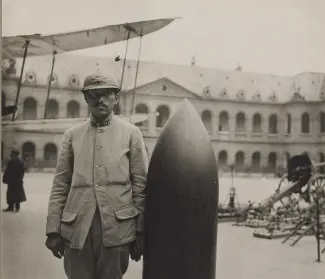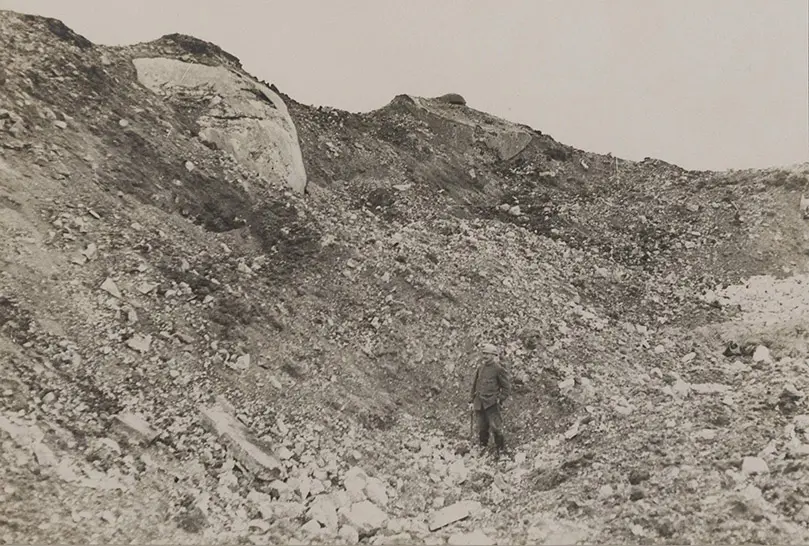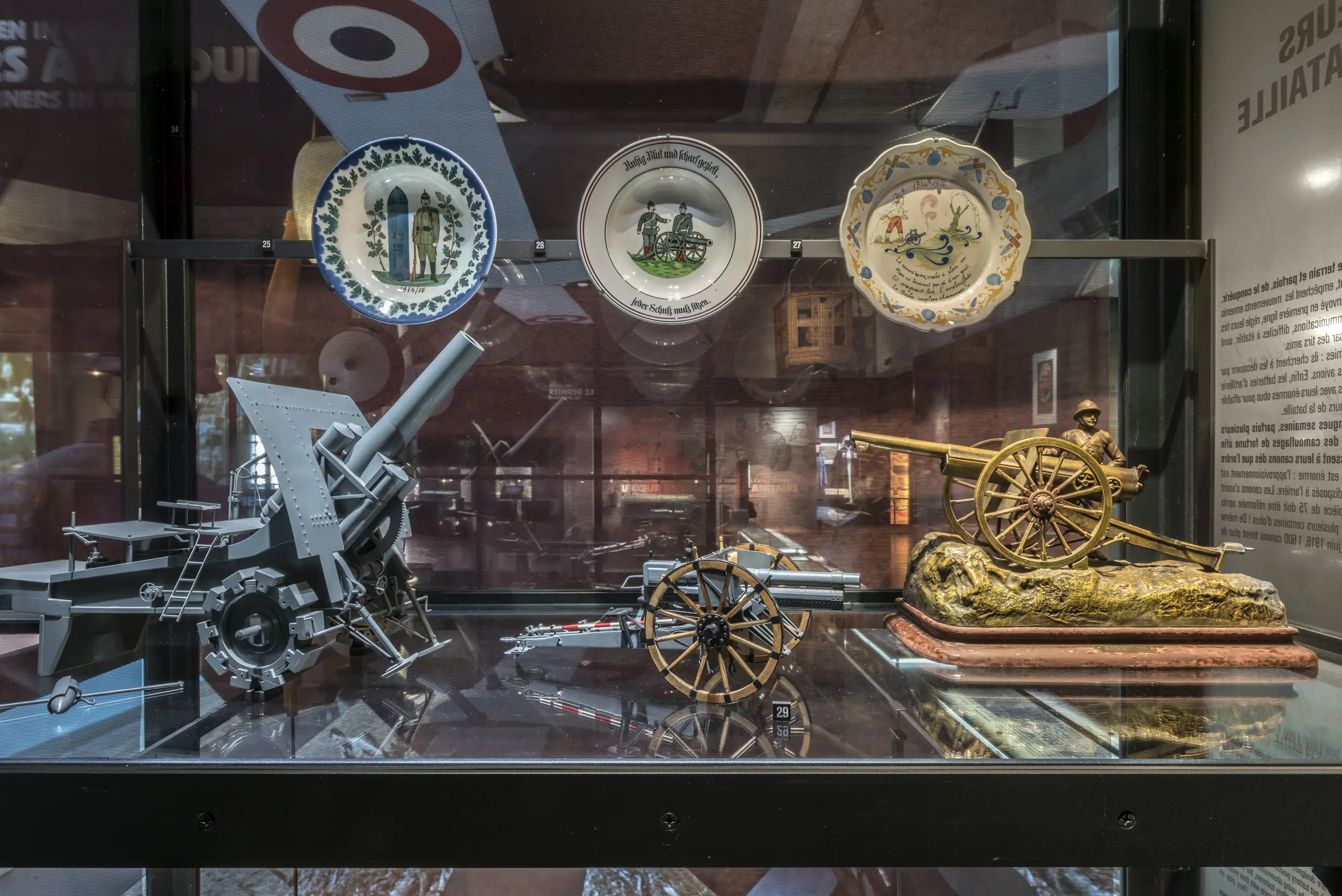Check our opening times and prices
Buy your ticket in advance
Prepare your visit to the battlefield

He was not part of the garrison. And yet young Georges Weiss, an 18 year old sergeant, spent the first days of the battle at his post on top of Fort Moulainville, laying the artillery pieces. His unit had retreated but he hadn’t left the fort. Eventually, due to his youth and determination, Fort Moulainville’s new commander Captain Harispe had agreed that he could stay, under Harispe’s orders.
It was now March 1916 and Weiss, who was from Belfort, had been given the job of observing the German artillery batteries that were attacking the fort. In particular, there were two 420mm guns trying to silence the two gun turrets. Initially positioned outside, Weiss had been forced to come back inside one of the cupolas to carry on his task. Staying out in the open was far too dangerous. The shells spitting from the guns were a terrifying sight for the men of the garrison.
With each shot, the sun appeared to come up 15 kilometres away, over the tops of the trees in the forest where the ammunition pieces were set. Grabbing the telephone that had been provided to him, Weiss informed the captain that a shot had been fired. From around the fort, the men ran inside the reinforced areas. They all knew that Weiss’s call marked the start of a 63-second countdown, at the end of which the projectile would land on the fort with a force of one tonne. The shell would climb 8 kilometres into the air and then plunge with all its weight towards its target. Deep inside Fort Moulainville, the men heard the projectile coming towards them more and more distinctly. It was as if an entire train with all its wagons was falling from the sky.
Weiss had to stay at his post. Trembling like a leaf, he gripped onto the sides of the goniometer that he used to give firing coordinates. With every shell, he thought his life was over. It wasn't the kind of emotion that you got used to easily. And then suddenly, the shell hit the fort, which seemed to be pushed into the ground before bouncing back to its original position, taking all of the men’s breath away. A few hundredths of a second later, the terrible explosion came. The blast and the fragments smashed and crumbled everything in their path; concrete, stone, brick and bone.
Later, from May 1916, tunnels were dug under the fort to offer better protection to the garrison, apart from Weiss who stayed at his post, scrutinising the position of the 420mm guns. Although, despite everything, he managed to keep his head, the same cannot be said for a number of his fellow soldiers. Exasperated by the situation, they became angry with him for his phone calls with their 63-second death warnings.
Because of the negative atmosphere, Captain Harispe eventually sent Weiss to the training centre in Fontainebleau. He was determined to spare this young man whose courage and cool head had saved so many lives.

